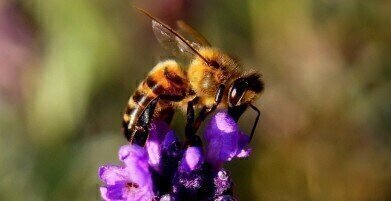Environmental Laboratory
What Are the Best Plants for City Bees?
Jun 04 2020
Shrubs, trees and vines made from wood are considered to be the best plants for bees living in an urban environment, according to new research conducted by Penn State University (PSU) in Philadelphia. The study, published in the journal Ecosphere, installed 12 apiaries across the city and analysed their performance over a 12-month period.
As well as taking monthly weight measurements of pollen intake, the researchers also extracted a small sample of the pollen to determine which plant it came from. In this way, they were not only able to observe seasonal fluctuations in the availability of pollen across Philadelphia, but also understand which genera of plants were providing pollen at which times of the year.
What, when and how much
In order to arrive at their conclusions, the research team put in place a network of 12 apiaries across Philadelphia, each of which was home to three bee colonies. Every colony was fitted with a sophisticated pollen trap, which not only received all pollen deposited by the bees, but also weighed it on an hourly basis.
Once a month, the team would visit the apiaries to take readings from the scales contained within each colony, as well as extract a small sample of the pollen. Then, using DNA-sequencing techniques, they were able to identify the genetic strains present in the samples to work out which plants had supplied it. In this manner, they could determine which plants are best for bees at any given time of the year.
“Ours is the first study to combine two novel techniques -- continuous colony weight monitoring and pollen DNA metabarcoding -- to answer simultaneously the questions of 'what' and 'how much' with respect to the flowers that are available to foraging insects," explained Douglas Sponsler, lead author on the paper. "Colony weight patterns tell us when resources are plentiful and when they are scarce. Pollen DNA metabarcoding tells us which plants are available at a given time and how the floral community changes through the year.”
Fruitful findings
The results showed that pollen was plentiful throughout spring, before falling away during the summer and enjoying a resurgence at the end of the season and into autumn. Winter was, unsurprisingly, the period wherein the least amount of pollen was available.
They also ascertained that tree varieties like oaks, maples and willows were the main producers of pollen during spring, while imported plants like crepe myrtle and Japanese pagoda picked up the shortfall during summer. Later in the year, woody vines like English ivy and the Virginia creeper came to the fore.
Interestingly, many of the plant genera that were deemed as vital producers of pollen were found in areas that had formerly being neglected or disturbed, but were now rich with floral biodiversity. The study provides useful information for urban planners looking to provide the best assistance for the beleaguered bee population, especially when conducting boundary monitoring exercises on construction projects to impact the surrounding wildlife as minimally as possible.
Digital Edition
IET 34.2 March 2024
April 2024
Gas Detection - Biogas batch fermentation system for laboratory use with automatic gas analysis in real time Water/Wastewater - Upcycling sensors for sustainable nature management - Prist...
View all digital editions
Events
Apr 30 2024 Melbourne, Australia
Apr 30 2024 Birmingham, UK
May 03 2024 Seoul, South Korea
May 05 2024 Seville, Spain
May 06 2024 Minneapolis, MN, USA


















